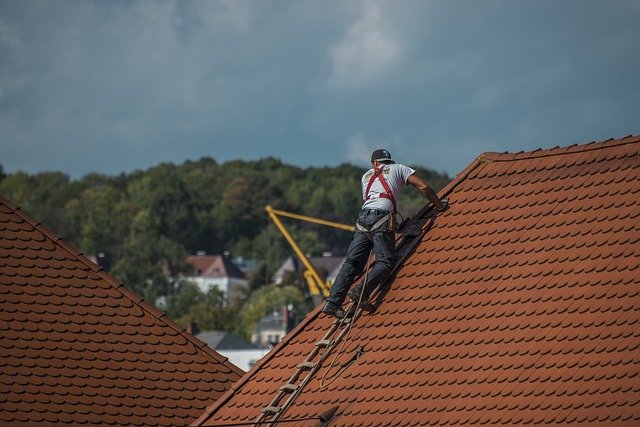The Ultimate Guide to Metal Roofing: Strength Meets Style
Discover why metal roofing is revolutionizing the construction industry. From unparalleled durability to surprising energy efficiency, this comprehensive guide explores the myriad benefits of metal roofs for both residential and commercial properties. Learn about various metal roofing materials, compare them to traditional options, and uncover the long-term value that makes metal an increasingly popular choice among savvy property owners.

The world of roofing has undergone a significant transformation in recent years, with metal emerging as a frontrunner in both residential and commercial applications. This guide delves into the intricacies of metal roofing, offering a comprehensive overview of its benefits, types, and considerations for those contemplating this modern roofing solution.
Types of Metal Roofing Materials
When it comes to metal roofing, property owners have a variety of options to choose from, each with its unique characteristics:
-
Steel: Known for its strength and affordability, steel roofing is often galvanized or coated with aluminum-zinc alloys for enhanced corrosion resistance.
-
Aluminum: Lightweight and naturally corrosion-resistant, aluminum roofing is an excellent choice for coastal areas exposed to salt air.
-
Copper: Prized for its distinctive appearance, copper roofing develops a beautiful green patina over time, offering both aesthetic appeal and exceptional longevity.
-
Zinc: A sustainable option with self-healing properties, zinc roofing forms a protective patina that helps it withstand the elements for decades.
These materials can be fashioned into various styles, including standing seam, metal shingles, and corrugated panels, allowing for customization to suit different architectural aesthetics.
Metal Roofs vs. Traditional Materials: A Comparison
When weighing the pros and cons of metal roofing against conventional materials like asphalt shingles, several factors come into play:
-
Lifespan: Metal roofs boast an impressive longevity of 50+ years with proper care, significantly outlasting the 15-20 year lifespan of typical asphalt shingles.
-
Weather Resistance: Engineered to withstand extreme conditions, metal roofing offers superior protection against high winds, heavy precipitation, and hail damage.
-
Energy Efficiency: The reflective properties of metal roofs contribute to reduced heat absorption, potentially lowering cooling costs in warmer climates.
-
Fire Safety: Many metal roofing systems carry a Class A fire rating, providing top-tier protection against external fire hazards.
-
Eco-Friendliness: Often manufactured using recycled materials and being 100% recyclable at the end of their lifecycle, metal roofs are a sustainable choice for environmentally conscious property owners.
While the initial investment in a metal roof may be higher, its durability and low maintenance requirements often result in lower long-term costs compared to traditional roofing materials.
Maintaining Your Metal Roof
One of the key advantages of metal roofing is its relatively low maintenance needs. However, to ensure optimal performance and maximize lifespan, consider the following care tips:
-
Bi-annual Inspections: Conduct visual checks in spring and fall to identify any potential issues early.
-
Debris Removal: Regularly clear leaves, branches, and other debris to prevent moisture accumulation and potential damage.
-
Scratch Management: Address any surface scratches promptly to prevent rust or corrosion from developing.
-
Fastener Checks: Periodically inspect and tighten any loose fasteners to maintain the roof’s integrity.
-
Tree Maintenance: Keep nearby trees trimmed to minimize the risk of falling branches and reduce debris accumulation.
By adhering to these simple maintenance practices, property owners can help ensure their metal roofs provide decades of reliable protection and aesthetic appeal.
Energy Efficiency and Metal Roofing
The energy-saving potential of metal roofs is a significant factor driving their popularity, particularly in regions with hot climates. Key features contributing to their energy efficiency include:
-
High Solar Reflectance: Metal roofs reflect a substantial portion of solar radiation, reducing heat transfer into the building.
-
Efficient Heat Dissipation: Many metal roofing materials exhibit high thermal emittance, quickly releasing absorbed heat.
-
Cool Roof Technology: Advanced coatings can further enhance the energy-saving capabilities of metal roofs.
-
Insulation Compatibility: Metal roofing systems can be installed with additional insulation layers, boosting overall building efficiency.
These characteristics can lead to reduced HVAC demands, lower energy bills, and improved indoor comfort levels, making metal roofs an attractive option for energy-conscious consumers.
Cost Considerations for Metal Roof Installation
When evaluating the financial aspects of installing a metal roof, it’s essential to consider both short-term expenses and long-term value:
| Material | Installed Cost (per sq ft) | Expected Lifespan |
|---|---|---|
| Steel | $6 - $12 | 40-70 years |
| Aluminum | $7 - $15 | 50+ years |
| Copper | $15 - $25 | 70+ years |
| Zinc | $10 - $20 | 60-100 years |
Note: Prices are estimates and may vary based on location, project complexity, and market conditions.
While the upfront cost of metal roofing typically exceeds that of traditional materials, several factors contribute to its long-term cost-effectiveness:
-
Minimal maintenance and replacement expenses over time
-
Potential energy savings from improved thermal performance
-
Increased property value and enhanced curb appeal
-
Possible insurance premium reductions due to improved fire resistance and durability
To make an informed decision, obtain quotes from multiple reputable contractors and consider the long-term benefits alongside the initial investment.
In conclusion, metal roofing represents a fusion of durability, efficiency, and aesthetic versatility in modern construction. While the initial cost may be higher than traditional roofing options, the long-term benefits in terms of longevity, reduced maintenance, and energy savings make it an increasingly popular choice for discerning property owners. By understanding the available options, maintenance requirements, and cost considerations, you can determine whether a metal roof aligns with your property’s needs and your long-term investment goals.






